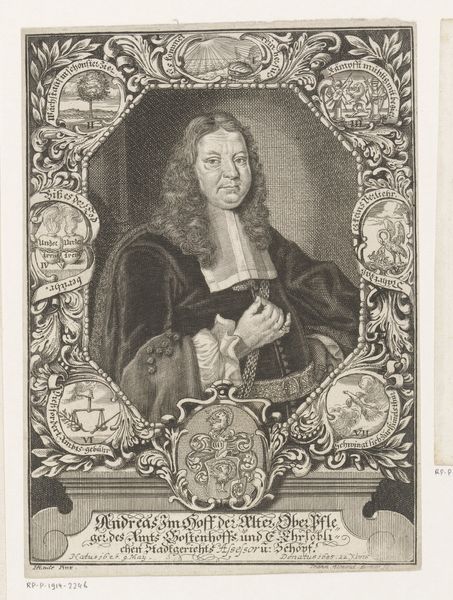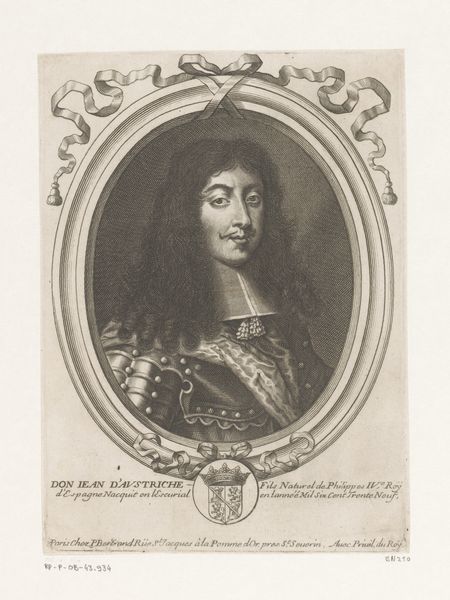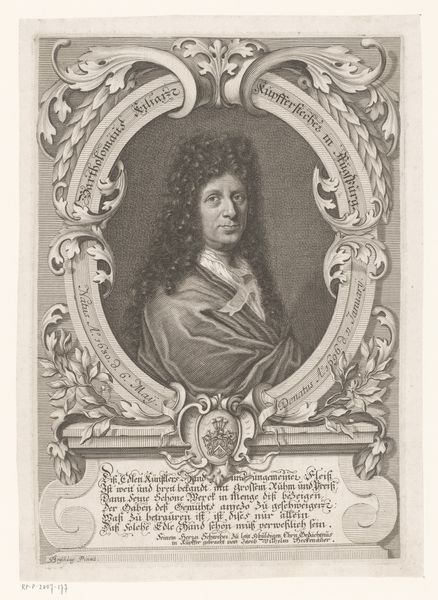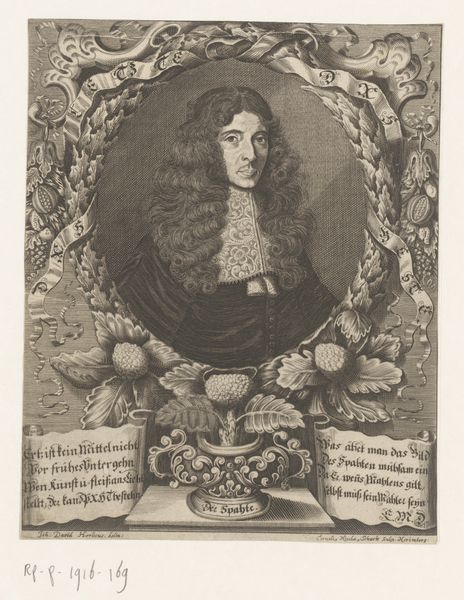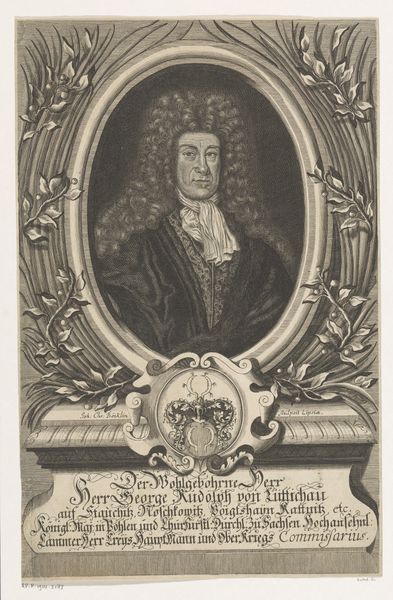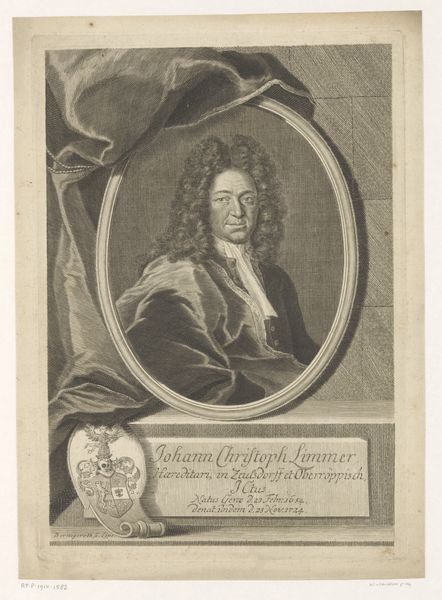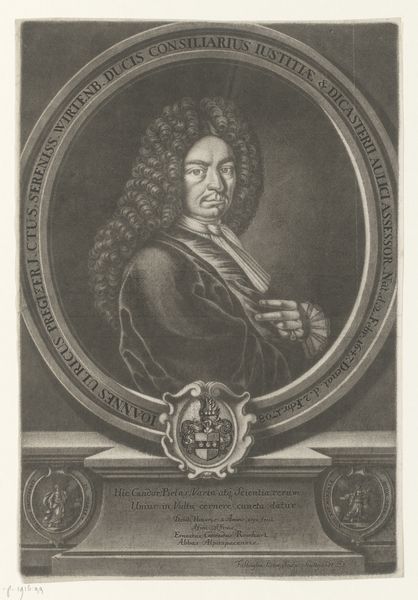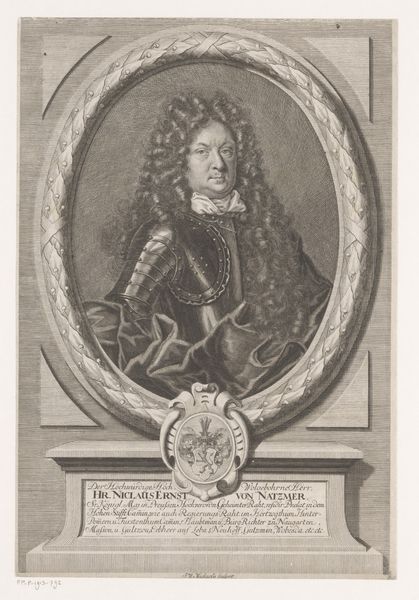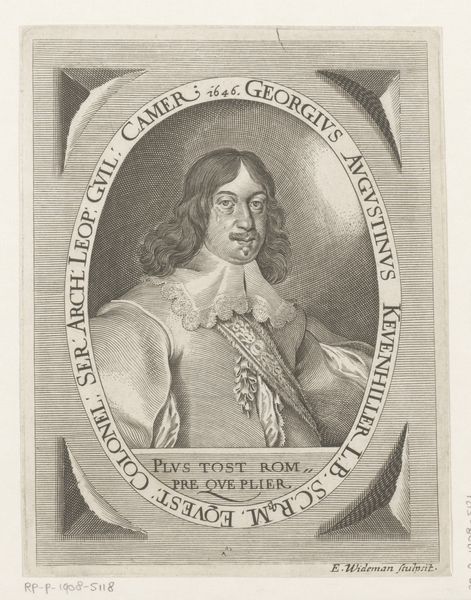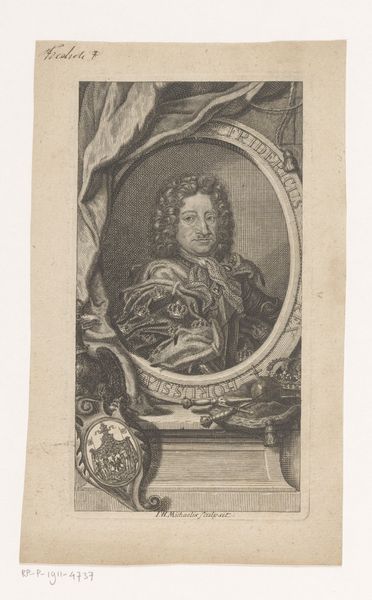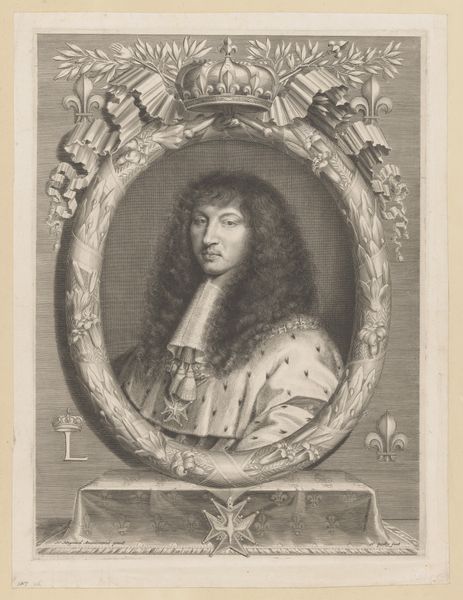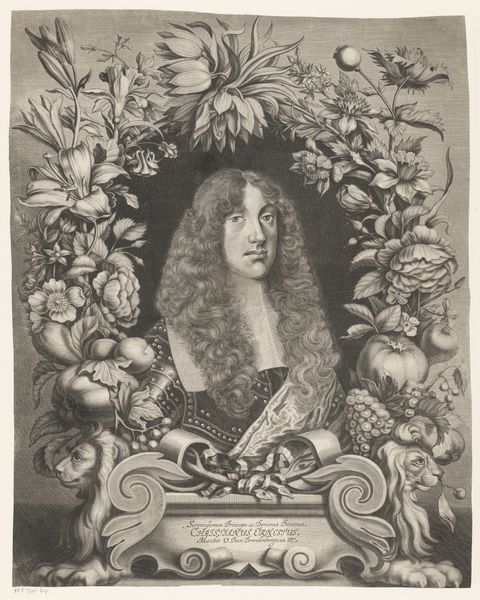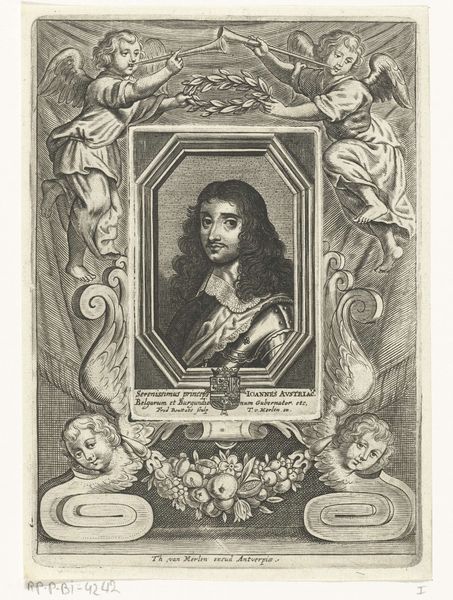
metal, engraving
#
portrait
#
baroque
#
metal
#
old engraving style
#
caricature
#
horse
#
portrait drawing
#
history-painting
#
engraving
Dimensions: height 478 mm, width 367 mm
Copyright: Rijks Museum: Open Domain
Editor: We're looking at a fascinating engraving from 1664, "Portret van Ferdinand Maria, keurvorst van Beieren" by Johann Georg Waldreich. The detail is just incredible! It has an overall serious, almost austere mood about it, though the horses framing the text give it a playful feel. What catches your eye most when you look at this? Curator: You know, I'm drawn to that face. It's hard to tell what he's truly thinking! Is it confidence? Resignation? A hint of weariness perhaps from all the political maneuvering of the day? It’s almost as though Waldreich captured a fleeting moment of vulnerability beneath the pomp and circumstance. Notice the dramatic Baroque framing though—it’s a theatrical stage for Ferdinand. Editor: Yes! The curtains! Almost like a play. The horses do seem like a funny touch. Out of curiosity, how exactly are engravings made, and what impact would that have on the artist and subject? Curator: Ah, great question. It’s essentially carving into metal—tedious, precise work. That meant Waldreich really had to nail the likeness from the start. No Photoshopping portraits back then! This method, while complex, allowed for prints to be made - enabling wider distribution and cementing Ferdinand’s image. The rigidity of the medium contrasts wonderfully, doesn’t it, with the supposed fluidity of the baroque age. Editor: It's really interesting how technical processes influence artistic choices and ultimately, how we see historical figures. This engraving tells a rich story, not just of Ferdinand Maria, but also of 17th-century artistry and statecraft. Thank you! Curator: My pleasure! It's these hidden layers that keep us coming back to art, isn't it? To the dialogue, to the questions, and hopefully, some beautiful, glimmering answers.
Comments
No comments
Be the first to comment and join the conversation on the ultimate creative platform.
